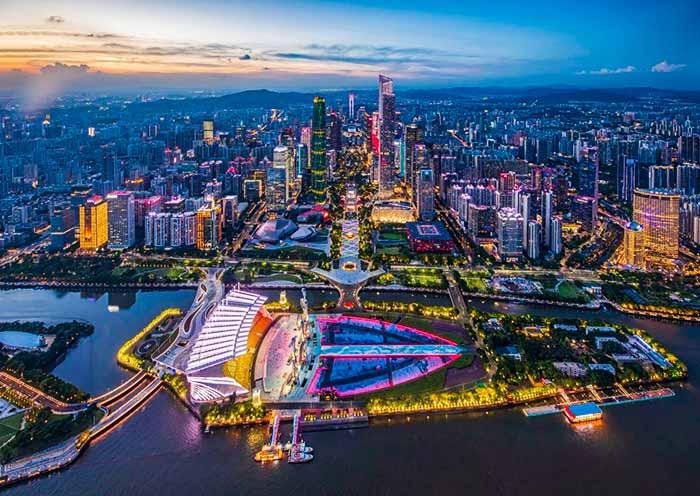Muscat, the capital city of Oman, is a captivating blend of traditional Arabian architecture and modern design, reflecti...
The Architectural Evolution of Guangzhou: A City of Tradition and Innovation

Guangzhou, a vibrant metropolis in southern China, is known for its rich history, diverse culture, and stunning architectural landscape. As one of the oldest cities in China, Guangzhou's architecture reflects its evolution over thousands of years, blending traditional elements with modern innovations.
The city's historical heart is the Chen Clan Ancestral Hall, a magnificent example of traditional Cantonese architecture. Built in the late 19th century, this ancestral hall features intricate wood carvings, beautiful ceramic sculptures, and stunning stone engravings. Its ornate design serves as a testament to the craftsmanship and artistic heritage of the region.

Another architectural highlight is the Sacred Heart Cathedral, a Gothic-style church constructed in the early 20th century. With its impressive twin spires, stained glass windows, and detailed stonework, the cathedral stands out in Guangzhou's skyline and showcases the influence of Western architecture during the colonial period.
The Canton Tower, an iconic symbol of modern Guangzhou, reaches a height of 600 meters, making it one of the tallest towers in the world. Its unique twisted design and dazzling LED light displays exemplify contemporary architectural innovation. The observation deck offers breathtaking views of the city and the Pearl River.
The Zhujiang New Town district is a testament to Guangzhou's rapid urban development. This area features a collection of skyscrapers, including the Guangzhou International Finance Center and the Guangdong Museum. The sleek glass façades and innovative designs of these buildings reflect the city's aspirations as a global financial hub.

Guangzhou's commitment to sustainability is evident in its green architecture initiatives. The Guangzhou International Eco-City, designed to promote environmentally friendly living, incorporates solar energy, green roofs, and efficient waste management systems. This development aims to create a harmonious balance between urban living and nature.
The historic Shamian Island is another architectural gem, showcasing colonial-era buildings that reflect the city’s past as a trading port. The tree-lined streets are home to beautifully preserved homes, banks, and consulates, providing a glimpse into the architectural styles of the 19th century.

The Sun Yat-sen Memorial Hall, designed in a traditional Chinese architectural style, honors the founding father of modern China. Its grand dome and vivid decorations celebrate Chinese culture and history, serving as a significant cultural landmark in the city.
As Guangzhou continues to grow, its architectural landscape evolves with it. The newly developed Nansha New Area includes a mix of residential, commercial, and cultural spaces, designed to accommodate the city’s expanding population while maintaining a focus on sustainability and livability.
In conclusion, Guangzhou's architecture is a fascinating blend of history and modernity. From traditional ancestral halls to contemporary skyscrapers, the city’s buildings tell a story of resilience, innovation, and cultural significance. As Guangzhou moves forward, it remains committed to preserving its architectural heritage while embracing the future.
Share:




